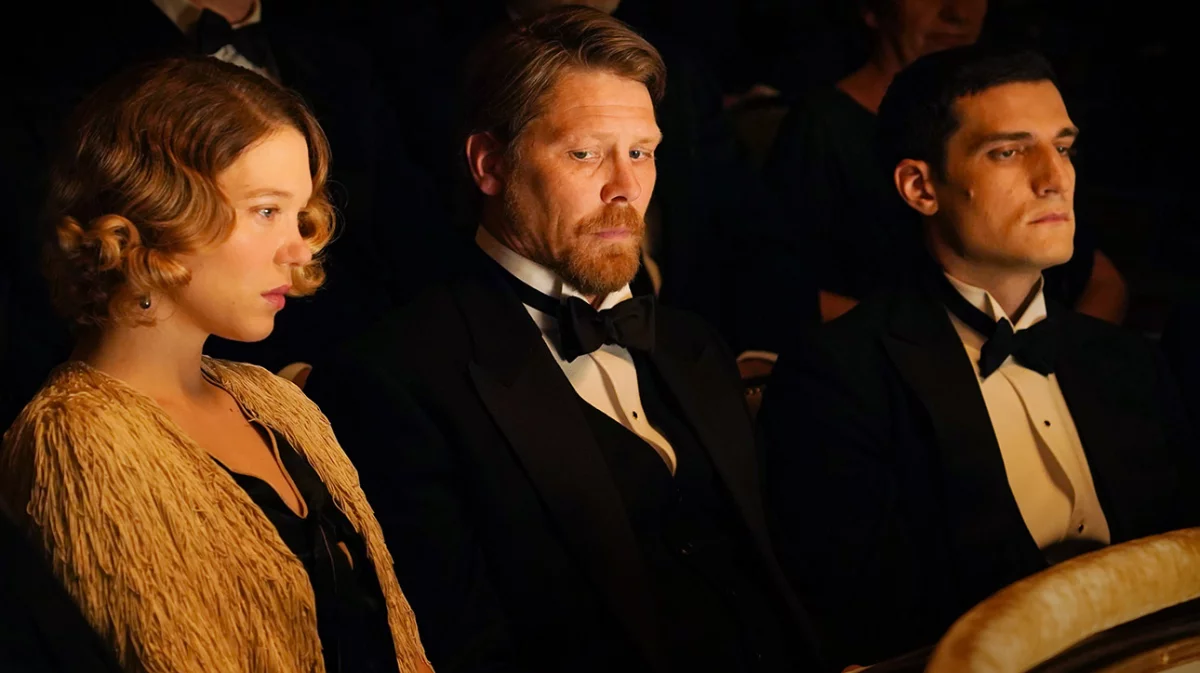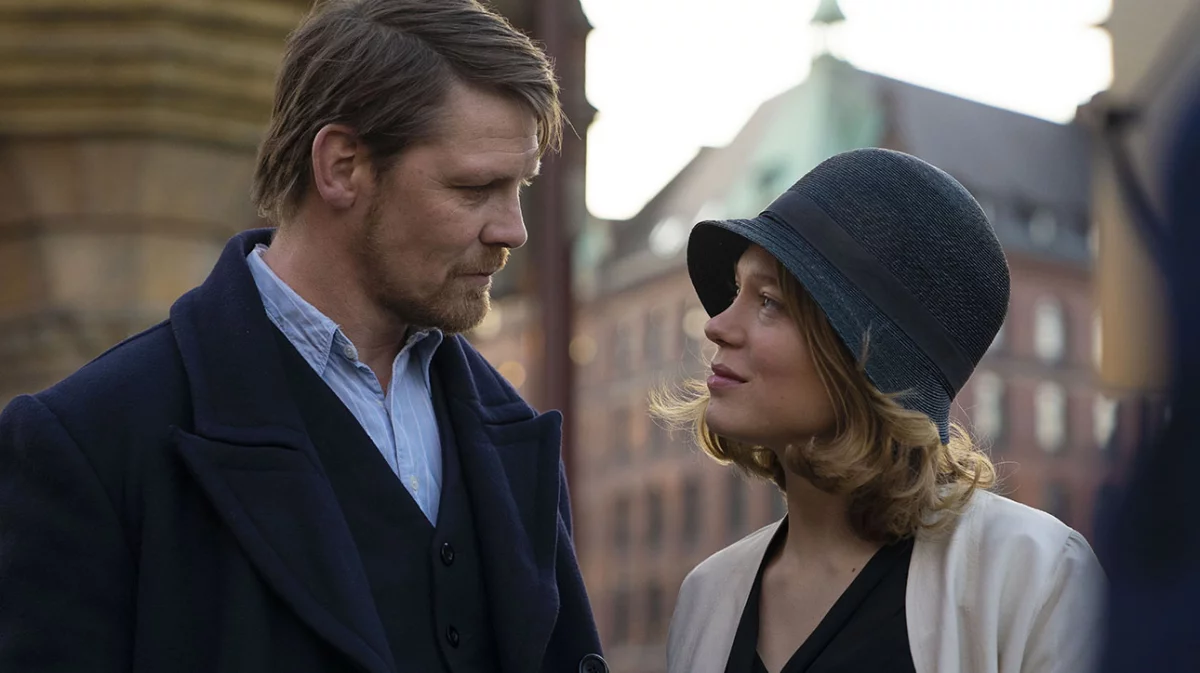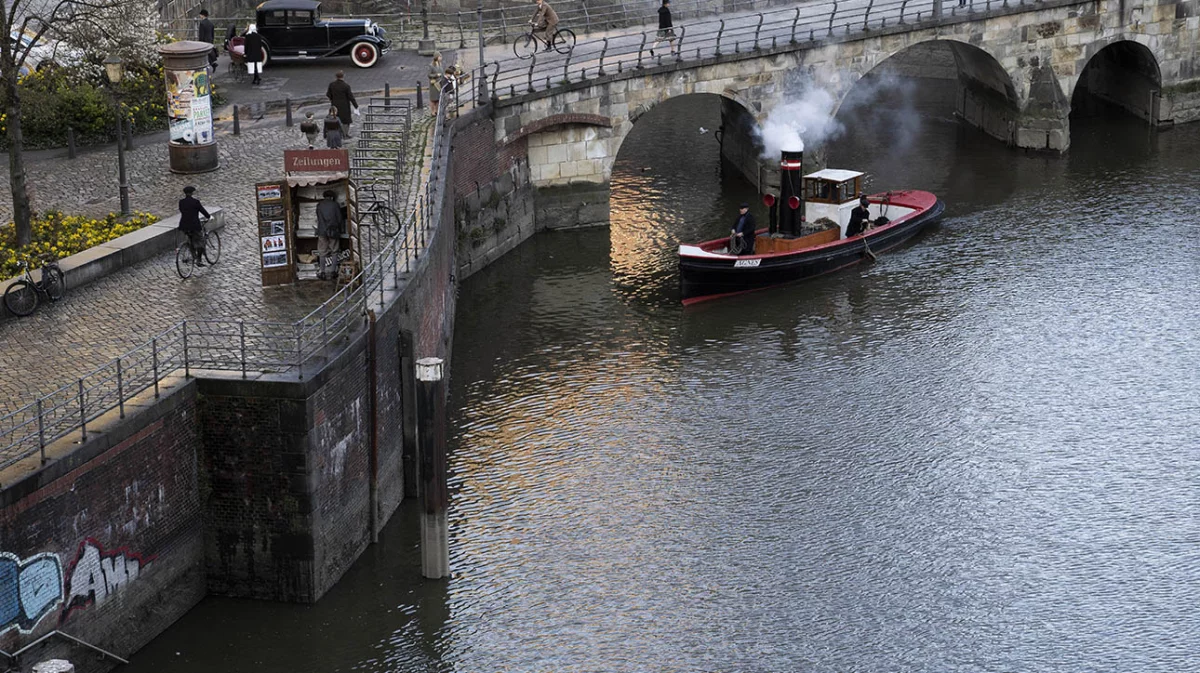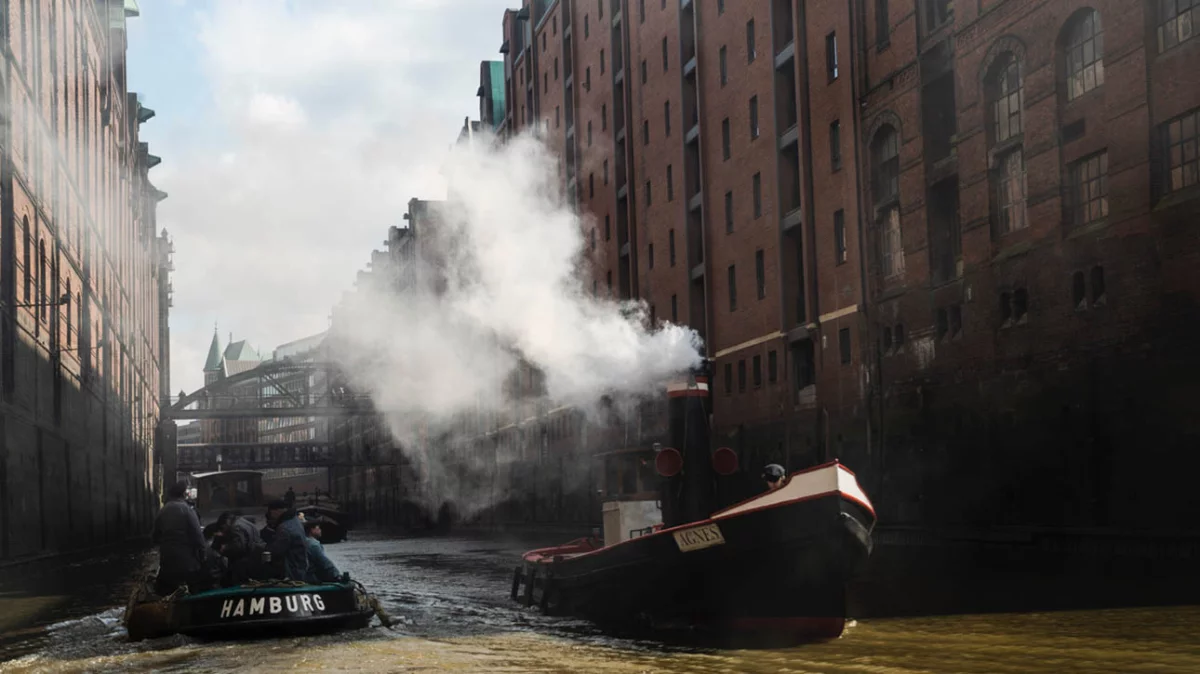Love drama in Hamburg in the 1920s
29.09.2021 | Hamburg shows its historical side for "The Story of my Wife"

Great European arthouse cinema has been announced for Filmfest Hamburg. The renowned and multi-award-winning Hungarian Director and Script Writer Ildikó Enyedi will present her latest film "The Story of my Wife" on 6 October as a German premiere on the Elbe. The opulent drama about love and jealousy is largely set in Hamburg, in locations such as the harbour, the Speicherstadt warehouse district, on the canals in the city and in front of and in the Hotel Atlantik.
This is the first time that the Hungarian Director has adapted a literary work from her compatriot Milan Füst's novel of the same name. In the film, which premiered in competition at Cannes at the beginning of July, the Hungarian Director once again tells an extraordinary and epic love story set in the 1920s, as in her Golden Bear-winning film "Body and Soul". The film stars French actress Léa Seydoux as Lizzy, Gijs Naber as the Dutch captain and Louis Garrel as his rival.

Jakob Störr (Gijs Naber) is an accomplished and self-confident Dutch ship's captain who wishes to sail into the harbour of marriage one day. In a restaurant, he bets to marry the first woman who enters the premises. In comes the young French woman Lizzy (Léa Seydoux) - and fate takes its course. The love and marriage drama was shot on location in Paris, Budapest, Malta and Hamburg. "Ildikó Enyedi already had Hamburg in mind when writing the screenplay, as the couple move from Paris to another city, which in the film has become Hamburg. The Hungarian Director also has a strong personal relationship with the city," explains Jonas Dornbach from Berlin-based Komplizen Film, who is the film's German Executive Producer together with Maren Ade and Janine Jackowski. The Director's debut film "My 20th Century" (1989) was already supported by the Hamburg Film Fund and she met her husband, who is from Hamburg, while filming in the Hanseatic city. She speaks good German and is also familiar with Hamburg.

The story set in the 1920s requires a great deal of effort in terms of production technology in order to bring this period back to life in a believable way: "It's great historical and costume cinema in the best sense of the word, which also creates a social image of the time," says Dornbach. Whether the production design of the interiors such as flats, bars, hotel suites, ship decks and corridors or the ship's spaces below deck, as well as the sets for the outdoor scenes, they all had to be produced true to the period. And Ildikó Enyedi and her Director of Photography Marcel Rév, who used 35mm material for their film, attached great importance to the elaborate lighting design of the scenes, which lend the film a special atmosphere and magic. For the set design, Enyedi once again worked with set designer Imala Láng, who had already worked on "Body and Soul". The world in Paris (which was filmed in Budapest) forms a contrast to Hamburg, especially the harbour with its ships, which represents the world of the captain.

Numerous regional filmmakers came on board for the filming in the Hanseatic city. Barbara Kreuzer from Hamburg, European Film Award winner for "Land of Mine" (2016), was recruited for the make-up. "It's fantastic how she works. We were all thrilled when we saw the first make-up tests for Léa Seydoux," says Dornbach. The art director for the shoot in Hamburg was Vicky von Minckwitz, "who we already know from working on our film 'Toni Erdmann'." She was supported by set designer Jan Mueller from Hamburg and exterior prop maker Petra Jakubowski.


There was a lot to do for this crew. For example, for all the ship scenes that were created on the two museum ships in Hamburg harbour, the former general cargo freighter MS Bleichen and the old steamship icebreaker Stettin. Other motifs can be found in the Speicherstadt warehouse district with its warehouses, bridges and canals, as well as on the canals along Herrengraben and Admiralitätsstraße. Two days of filming were dedicated to the Trostbrücke, where the captain and his wife live in Hamburg. Night shots were also realised there, as well as in front of the Hotel Atlantic. The "white castle on the Outer Alster", once built as a grand hotel for the passengers of the Hamburg-America shipping line, also forms the backdrop for a masked ball scene with its banqueting rooms, the film's climax.

The scenery at Trostbrücke was decorated with historical signs and posters. For various scenes in the Speicherstadt, old market stalls were set up at the intersection of St. Annenufer and Neuerwegsbrücke, vintage cars drive along the streets and historic ships and barges, on loan from the Övelgönne museum harbour, also make an appearance on the canals. "Extensive barriers were necessary at these locations," reports Alexandra Luetkens from the Film Commission Hamburg: "Discussions were held well in advance with the city authorities and other authorising bodies, such as the Hamburg Port Authority, in order to make this filming in the middle of the city possible at all. Location Manager Robert Seemann did all the organisational and planning groundwork for this." The Film Commission also met with the production team and the Directors long before the shoot to inspect the locations in the city that symbolise a historic Hamburg. "We are proud that we can still find these places in Hamburg where historical shots can be realised," says Luetkens. The MOIN Film Fund Hamburg Schleswig-Holstein supported the production with a total of 450,000 euros. The production spent around one million euros on location.






